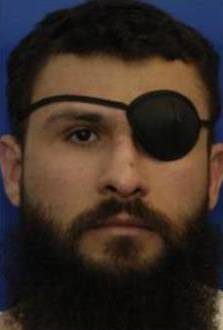
Abu Zubaydah is a Palestinian citizen and alleged terrorist born in Saudi Arabia currently held by the U.S. in the Guantanamo Bay detention camp in Cuba. He is held under the authority of Authorization for Use of Military Force Against Terrorists (AUMF).

Waterboarding is a form of torture in which water is poured over a cloth covering the face and breathing passages of an immobilized captive, causing the person to experience the sensation of drowning. In the most common method of waterboarding, the captive's face is covered with cloth or some other thin material and immobilized on their back at an incline of 10 to 20 degrees. Torturers pour water onto the face over the breathing passages, causing an almost immediate gag reflex and creating a drowning sensation for the captive. Normally, water is poured intermittently to prevent death; however, if the water is poured uninterruptedly it will lead to death by asphyxia. Waterboarding can cause extreme pain, damage to lungs, brain damage from oxygen deprivation, other physical injuries including broken bones due to struggling against restraints, and lasting psychological damage. Adverse physical effects can last for months, and psychological effects for years. The term "water board torture" appeared in press reports as early as 1976.

Alberto R. Gonzales is an American lawyer who served as the 80th United States Attorney General from 2005 to 2007 and is the highest-ranking Hispanic American in executive government to date. He previously served as Secretary of State of Texas, as a Texas Supreme Court Justice, and as White House Counsel, becoming the first Hispanic to hold that office.

John Choon Yoo is a South Korean-born American legal scholar and former government official who serves as the Emanuel S. Heller Professor of Law at the University of California, Berkeley. Yoo became known for his legal opinions concerning executive power, warrantless wiretapping, and the Geneva Conventions while serving in the George W. Bush administration, during which he was the author of the controversial "Torture Memos" in the War on Terror.

The Office of Legal Counsel (OLC) is an office in the United States Department of Justice that assists the Attorney General's position as legal adviser to the President and all executive branch agencies. It drafts legal opinions of the Attorney General and provides its own written opinions and other advice in response to requests from the Counsel to the President, the various agencies of the Executive Branch, and other components of the Department of Justice. The Office reviews and comments on the constitutionality of pending legislation. The office reviews any executive orders and substantive proclamations for legality if the President proposes them. All proposed orders of the Attorney General and regulations that require the Attorney General's approval are reviewed. It also performs a variety of special assignments referred by the Attorney General or the Deputy Attorney General.
Extrajudicial prisoners of the United States, in the context of the early twenty-first century War on Terrorism, refers to foreign nationals the United States detains outside of the legal process required within United States legal jurisdiction. In this context, the U.S. government is maintaining torture centers, called black sites, operated by both known and secret intelligence agencies. Such black sites were later confirmed by reports from journalists, investigations, and from men who had been imprisoned and tortured there, and later released after being tortured until the CIA was comfortable they had done nothing wrong, and had nothing to hide.
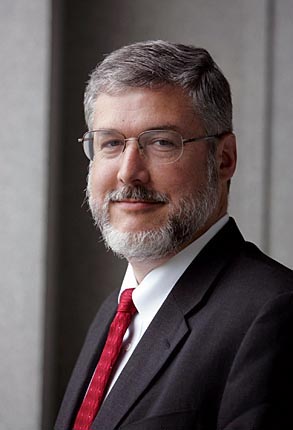
David Spears Addington is an American lawyer who was legal counsel (2001–2005) and chief of staff (2005–2009) to Vice President Dick Cheney. He was the vice president of domestic and economic policy studies at The Heritage Foundation from 2010 to 2016.
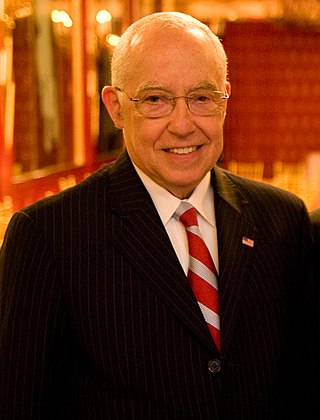
Michael Bernard Mukasey is an American attorney and former federal judge who served as the 81st Attorney General of the United States from 2007 to 2009.
There are cases, both documented and alleged, that involve the usage of torture by members of the United States government, military, law enforcement agencies, intelligence agencies, health care services, and other public organizations both in and out of the country.

William James "Jim" Haynes II is an American lawyer and was General Counsel of the Department of Defense during much of 43rd President George W. Bush's administration and his war on terror. Haynes resigned as general counsel effective March 2008.
"Enhanced interrogation techniques" or "enhanced interrogation" was a program of systematic torture of detainees by the Central Intelligence Agency (CIA), the Defense Intelligence Agency (DIA) and various components of the U.S. Armed Forces at remote sites around the world—including Bagram, Guantanamo Bay, Abu Ghraib, and Bucharest—authorized by officials of the George W. Bush administration. Methods used included beating, binding in contorted stress positions, hooding, subjection to deafening noise, sleep disruption, sleep deprivation to the point of hallucination, deprivation of food, drink, and medical care for wounds, as well as waterboarding, walling, sexual humiliation, rape, sexual assault, subjection to extreme heat or extreme cold, and confinement in small coffin-like boxes. A Guantanamo inmate's drawings of some of these tortures, to which he himself was subjected, were published in The New York Times. Some of these techniques fall under the category known as "white room torture". Several detainees endured medically unnecessary "rectal rehydration", "rectal fluid resuscitation", and "rectal feeding". In addition to brutalizing detainees, there were threats to their families such as threats to harm children, and threats to sexually abuse or to cut the throat of detainees' mothers.

Patrick F. Philbin is an American lawyer who served as Deputy Counsel to the President and Deputy Assistant to the President in the Office of White House Counsel in the Donald J. Trump administration. He previously served in the Department of Justice during the George W. Bush administration.
Daniel Bernard Levin served as Acting Assistant Attorney General for the Office of Legal Counsel of the U.S. Justice Department from July 2004 until February 2005. He is notable for having upheld legal opinions during the Bush administration that narrowly defined torture and authorized enhanced interrogation techniques. These opinions were mostly secret during this period, but rumors of abuse of prisoners were widespread, particularly after the 2004 Abu Ghraib prisoner torture and abuse scandal in Iraq. These opinions were repudiated in 2009 by the Obama administration.
The CIA interrogation videotapes destruction occurred on November 9, 2005. The videotapes were made by the United States Central Intelligence Agency (CIA) during interrogations of Al-Qaeda suspects Abu Zubaydah and Abd al-Rahim al-Nashiri in 2002 at a CIA black site prison in Thailand. Ninety tapes were made of Zubaydah and two of al-Nashiri. Twelve tapes depict interrogations using "enhanced interrogation techniques", a euphemism for torture. The tapes and their destruction became public knowledge in December 2007. A criminal investigation by a Department of Justice special prosecutor, John Durham, decided in 2010 to not file any criminal charges related to destroying the videotapes.

Steven Gill Bradbury is an American attorney and government official who served as the General Counsel of the United States Department of Transportation. He previously served as Acting Assistant Attorney General (AAG) from 2005 to 2007 and Principal Deputy AAG from 2004 to 2009, heading the Office of Legal Counsel (OLC) in the U.S. Department of Justice during President George W. Bush's second term.
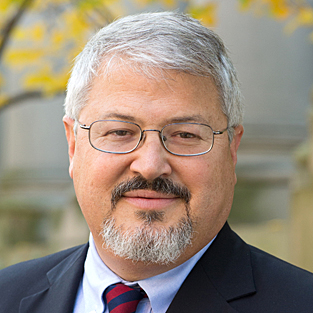
Jack Landman Goldsmith III is an American legal scholar. He serves as the Learned Hand Professor of Law at Harvard Law School, where he has written extensively in the fields of international law, civil procedure, federal courts, conflict of laws, and national security law. Writing in The New York Times, Jeffrey Rosen described him as being "widely considered one of the brightest stars in the conservative legal firmament".
Dawn Elizabeth Johnsen is an American lawyer and the Walter W. Foskett Professor of Constitutional law, on the faculty at Maurer School of Law at Indiana University in Bloomington, Indiana. She previously served in the Biden administration as Acting Attorney General at the Office of Legal Counsel, having been appointed on January 20, 2021 by President Joe Biden, to return to the role she previously held in the Clinton administration. She was succeeded in that role in a permanent capacity by Christopher H. Schroeder, and is currently serving as the Principal Deputy Assistant Attorney General in the same office
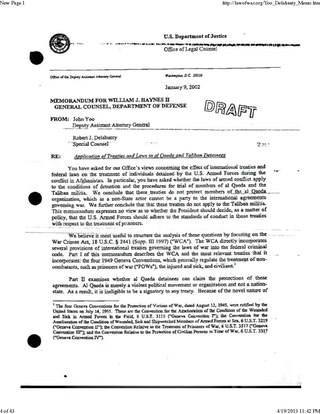
A set of legal memoranda known as the "Torture Memos" were drafted by John Yoo as Deputy Assistant Attorney General of the United States and signed in August 2002 by Assistant Attorney General Jay S. Bybee, head of the Office of Legal Counsel of the United States Department of Justice. They advised the Central Intelligence Agency, the United States Department of Defense, and the President on the use of enhanced interrogation techniques—mental and physical torment and coercion such as prolonged sleep deprivation, binding in stress positions, and waterboarding—and stated that such acts, widely regarded as torture, might be legally permissible under an expansive interpretation of presidential authority during the "War on Terror".
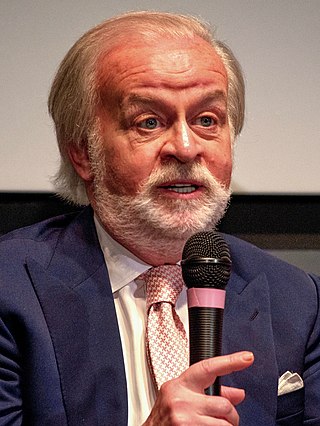
John Anthony Rizzo was an American attorney who worked as a lawyer in the Central Intelligence Agency for 34 years. He was the deputy counsel or acting general counsel of the CIA for the first nine years of the War on Terror, during which the CIA held dozens of detainees in black site prisons around the globe.

Steven Andrew Engel is an American lawyer. He served as the United States assistant attorney general for the Office of Legal Counsel in the Trump administration. Engel, who previously worked in the George W. Bush administration as deputy assistant attorney general in the Office of Legal Counsel, was nominated by President Donald Trump on January 31, 2017, and confirmed on November 7, 2017.














